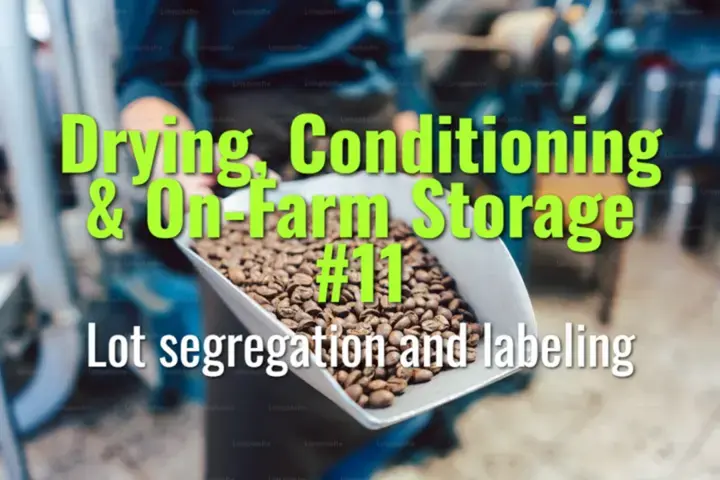Lot segregation and labeling
This topic explains how lot segregation and labeling are managed in coffee drying and storage, why they are essential for traceability, and how they impact quality consistency and market value.
- Coffee Basics Nerds
- 2 min read
Article 11 of 12 in Drying, Conditioning & On-Farm Storage/

Why Lot Segregation Matters
- Each lot (defined by farm, variety, processing method, or harvest date) can have unique qualities.
- Mixing lots risks blending defects into high-quality batches.
- Segregation preserves traceability, consistency, and market differentiation.
Lot Segregation Practices
- By farm or producer: Keeps identity of each supplier intact.
- By variety/cultivar: Maintains purity of flavor expression.
- By processing method: Distinguishes washed, natural, honey, or experimental lots.
- By quality level: Separates specialty-grade from commercial-grade coffee.
Labeling Protocols
- Assign a unique lot code at cherry reception.
- Record farmer, date, processing type, and location.
- Apply labels consistently on drying beds, storage bags, and warehouse logs.
Documentation
- Lot codes tracked through:
- Logbooks or spreadsheets.
- Digital farm management systems.
- Exporter or cooperative databases.
- Links physical coffee to cupping results and certifications.
Quality Benefits
- Prevents accidental mixing of specialty with lower-grade lots.
- Supports repeatability by connecting processing data with cup outcomes.
- Facilitates targeted feedback for farmers on their specific lots.
Market Implications
- Specialty buyers demand transparency and identity preservation.
- Micro-lots and experimental processes fetch premium prices.
- Certifications (Organic, Fairtrade, etc.) require clear traceability.
Challenges
- Labor-intensive during peak harvest.
- Risk of mislabeling or lost records without disciplined systems.
- Requires training and infrastructure (tags, storage areas).
Best Practices
- Use durable waterproof tags or stencils on bags.
- Color-code or physically separate storage areas by lot type.
- Cross-check lot codes with cupping reports and sales contracts.
Lasting Importance
Lot segregation and labeling are critical for protecting quality and identity in coffee. They allow producers to highlight unique characteristics, buyers to trust origin claims, and the market to reward transparency with higher value and stronger relationships.
You might also like:
- Tags:
- Lasting Importance
- Best Practices
- High Quality
- Specialty Buyers
- Specialty Grade
- Labor Intensive
- Market Implications
- Lot Codes
- Organic Fairtrade
- Processing Method
- Micro Lots
- Implications Specialty
- Commercial Grade
- Certifications Organic
- Grade Coffee
- Natural Honey
- Buyers Demand
- Drying Beds
- Washed Natural
- Cupping Results
- Challenges Labor
- Requires Training
- Market Differentiation
- Flavor Expression
- Harvest Date
- Premium Prices
- Grade Lots
- Quality Benefits
- Specific Lots